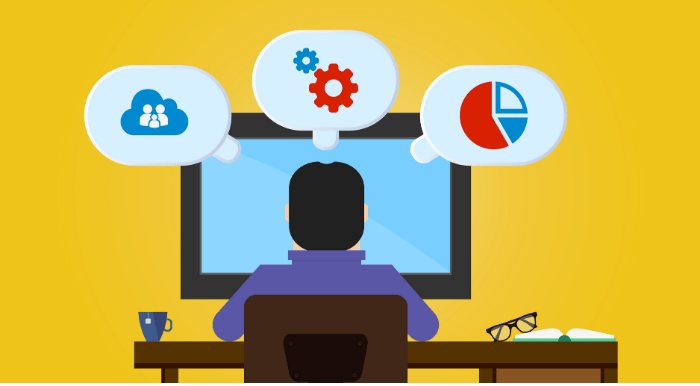Web Development is among the most in demand technologies in today’s market. So if you are an aspiring Web Developer and don’t know where to start, here is what you heard from Sefisoft covered the whole new section on Web Developer roadmap.
let’s take a quick look at today’s agenda. We’re going to start off by discussing who exactly is a Web Developer, followed by the technical skills that are required to become a Web Developer.
Since Web Development can be divided into three sections, that is
- Front-end Developer
- Back-end Developer
- Full-Stack Developer
we’re going to be discussing all the technologies that you need to know in order to become a Web Developer in any of the three domains, Finally, we’ll be discussing about the non technical skills that are required,
Who is a Web Developer?

Professionals who create Websites and Web applications are known as Web Developers. These professionals make use of various methodologies in order to create Websites.
Today, Web applications are mostly single page applications that are compatible both with desktops and mobiles, As I’ve already mentioned earlier that Developers can be of three types that’s basically Front end, back end and Full-Stack Developers.
- Front end Developer
A Front end Developer is someone who implements Web design through programming languages like HTML, CSS, and JavaScript.
Front-end developers work with the design and the outlook of the Website. If you head to any site, you can see the work of a Front end Developer in the navigation layouts, and also the way a site looks different from your phone.
- Back-end Developer
Back-end Developer on the other hand, are responsible to work on what goes behind the scenes like Databases. They create, write the code and improve the server side applications and Databases.
Back-end Developer study industry trends, create or improve back end processes and codes and work with others to design a better program.
- Full-Stack Developer
A Full-Stack Developer is someone who has good understanding of how the Web works at each and every level, including setting up and configuring Linux or Windows servers and coding server side API’s running the client side of the application using JavaScript, operating and querying the Databases and structuring and designing the Webpage with CSS and JavaScript.
Skills Required to become a Web Developer

Now that you have a brief idea of who exactly is a Web Developer, let’s move on and take a look at the skills that are required to become a Web Developer.
The first thing that we’re going to discuss is the Front end Developer skills. So in this section, we’re going to discuss about the
Skills for a Front end Web Developer
1. HTML and CSS
Html stands for Hypertext Markup Language, And it is the most basic building block required for developing Websites and CSS or Cascading Style Sheets is the language that is used for presenting the document you create with HTML.
HTML is used for creating the foundation of your page, Whereas CSS is used to create the layout of the page color, font and styles.
And both of these languages are absolutely essential to become a Front end Developer,
2. JavaScript along with jQuery
Another important tool for a Front end Developer is JavaScript, If you are trying to implement interactive features in your Websites, such as audio and video games, scrawling abilities, page animations, etc. JavaScript is the tool you need to know.
jQuery is a library of JavaScript, which is among the most used libraries across the world, It basically is a collection of plugins and extensions that make it faster and easier to use JavaScript on your Website.
jQuery takes common tasks that require multiple lines of JavaScript code, and compresses them into a format that can be executed with a single line.
3. Frameworks
As Front-end developers, it is important that you have some knowledge of frameworks and libraries such as Angular, React, view, etc.
These are basically frameworks and libraries that are based on JavaScript and JavaScript frameworks are collections of CSS or JavaScript files that perform different tasks by providing common functionality.
Instead of starting with an empty text document, you can start with a code file that has lots of JavaScript present already in it.
4. Responsive Design
We use different gadgets like computers, phones, and tablets to look at Webpages and the Web pages adjust themselves to the device you’re using without any extra effort from your end.
This is due to the responsive design feature. It has an intrinsic part of CSS frameworks like the bootstrap,
5. Version control or Git
Version Control is the process of tracking and controlling changes, Do your source code and it is a tool that you can use to track the changes made previously so that you can go back to a previous version of your work and find out what went wrong without tearing the whole thing down.
6. Testing and Debugging
A Front end Developer must possess the skill and ability to test and debug the code. And there are different testing methods for Web Development.
functional testing looks at a particular piece of functionality on your site and ensures it does everything according to the code.
unit testing is another method that tests smallest bit of code and examines it individually for correct operation.
Testing is a big part of Front end development process, And there are a number of frameworks that will help you in this regard.
7. Browser Developer tools
Browser Developer Tools usually consist of an inspector and a JavaScript console, The inspector allows you to see what the runtime HTML on your page looks like, what CSS is associated with each element on the page, and also allows you to edit your HTML and CSS and see the changes live as they happen?
8. Web performance
it is important to make sure that your Website performs smoothly without any glitch, That performance defines the amount of time it takes for your Website to load.
Programs like grunt and Gulp can be used to automate image optimization, CSS and Js minifying, and other Web performance scores, It helps in making your Website more efficient.
9. CSS processing
css processor is an advanced version of CSS, This is used to enhance the primary class of CSS to create better versions of the Website.
It is not just a language to improve the styling elements, but it helps the Developer to skip tasks like writing CSS selectors, and colors strings frequently.
10. Command Line
GUI is an important part of Web Development and coding as well. But an all purpose to GUI is going to have its limitations for some specific applications. Sometimes, you may need to open a terminal on your computer,
but you can enter typed commands or command lines to get what you need. Although the majority of the work is done through a GUI, you can add serious creds to your Front end skills if you have mastery of the command line.
So these are some of the technical skills that are required by Front-end developers.
Skills for a Back-end Developers

Now let’s talk about the skills that are required by Back-end Developer.
1. Programming languages
The Back-end developers layer forms a dynamic connection between the Front end and the Database. To get this layer working. It’s important to know at least one of the programming languages like Python, Java, PHP, Ruby, etc.
and the knowledge of server side frameworks such as Node JS is a must, Pyton is an open source object oriented programming language that was released in 1991.
And ever since it has become one of the most favorite languages of software Developers and Web Developers.
Java is also an open source high level programming language, which was released by Sun Microsystems in 1996.
It follows the right once run anywhere approach that makes it compatible to run on any platform. Another popular Web Development language is PHP, It is an open source server side scripting language used to develop the back end logic of an application.
It is a powerful tool for making dynamic and interactive Websites, No Node JS is an open source JavaScript framework used specifically for creating the back end or the server side of an application through Node JS, JavaScript can now finally run on the server side of the Web as well as.
2. Data and Database
The Data layer is a massive warehouse of information, It contains a Database repository that captures and stores information from the Front end through the back end.
a prerequisite is to have the knowledge of how Data is stored, edited, retrieved, etc. and understanding of Databases such as MySQL, MongoDB, etc, is a must.
And MySQL is basically an open source relational Database management system that provides multi user access and supports multi storage engines. MongoDB is known for its ease of use, and its quickness in handling a large amount of Data.
It is an open source, object oriented no SQL Database, which is highly scalable, and it’s efficient in handling unstructured Data.
3. Server setup
To make a Website accessible publicly on the internet, it needs to be installed on a server. Once you have your domain name on Server space, it’s time to set up the site on the server.
The first thing is to direct the domain name to the server’s unique IP address, Then you need to set up the Website files and finally the Database and other configurations.
4. Deployment tools
To get files from your own computer up to the server, you need a protocol. This is basically a method of transporting files or other Data and to and from a server.
The deployment tool stores your FTP or SFTP settings, And when a change is published in Git to the master branch, the tool will transfer the files for you and therefore there is no need to remember which file you changed reducing the number of mistakes you make.
5. JavaScript frameworks and libraries
some of the most important JavaScript frameworks and libraries are Angular, React, view, jQuery, etc.
So those are the skills that are required in order to become a Back-end developers.
Skills for a Full-Stack Web Developers

So talking about Full-Stack Web Developers, a Full-Stack Web Developer must know how to create and maintain the Front end and the back end of a Web application, And they also must be proficient with the various languages used to develop of that application.
1. HTTP protocols
A Full-Stack Developer needs to have an in depth understanding of the Web architecture and communication protocols like HTTP, TCP, IP, etc.
They should be skilled in working with deployment operating systems like Ubuntu, CentOS, windows, etc.
They also should have a sound knowledge of Web servers, and basic UI, UX designing abilities.
2. Html, Css, JS
A Full-Stack Developer should be proficient in the Front end technologies, such as HTML, CSS, and JavaScript, they should be able to design and develop the UI using the Web Development frameworks and libraries that I’ve already mentioned earlier.
3. Server side Technology
Full-Stack Developers are required to have a good amount of knowledge of server side programming languages like Java, Python, PHP, Ruby, etc, as well as server side frameworks such as Node JS.
4. Database
They should be well versed in operating and querying relational and no SQL Database management systems such as MongoDB, MySQL, etc.
Apart from that, a Full-Stack Developer also should know how to operate and manage the version control systems such as git, subversion, etc.
So that is technical skills that are required by all three that is the Front end, back end and Full-Stack Developers and also not to forget, the knowledge of DevOps can give you an edge.
DevOps is basically a combination of two words that is development and operations. DevOps is a practice that allows a single team to manage the entire application development lifecycle, that is development, testing, deployment and monitoring.
The ultimate goal of DevOps is to decrease the duration of systems development lifecycle, while delivering features, fixes and updates frequently in close synchronization with business objectives.
Non-Technical Skills

Now that you know the technical skills that are required, let’s move on and take a look at the non technical skills that you need to possess in order to fetch you the best Web Development job in the market.
As a Web Developer, it is very important that you possess the appropriate technical skills, but at the same time to make efficient products, it is also important to communicate with the client and grasp ideas.
To do this, you should be well versed with verbal and vocal communication skills. And also, to work with the team you need to possess the basic lessons of teamwork as well as one thing that all Developers must have, regardless of the job description,
or official title is excellent problem solving skills, from figuring out how to best implement a design to fixing bugs that crop up figuring out how to make the Front end code work for the back end code.
Development is all about creative problem solving skills. To conclude, all I’d like to say is that becoming a Web Developer requires good amount of effort and dedication.
But is it worth all the effort? Yes, it definitely is. So with this lever is the end of the Article. I hope you have understood the roadmap and the skills that you need to master in order to become a Web Developer.
In case you have any doubts or queries, please do let me know in the comment section and I will revert to you at the earliest and we will be back with more and more exciting Article.
